Rolinoz is an antihistamine for systemic use. Symptomatic therapy of nasal and ocular symptoms of seasonal and perennial allergic rhinitis, chronic idiopathic urticaria.
Composition
- active ingredient: cetirizine;
- 1 film-coated tablet contains cetirizine dihydrochloride 10 mg;
- Excipients: microcrystalline cellulose; lactose, monohydrate; colloidal anhydrous silica; sodium starch glycolate (type A); magnesium stearate;
- film coating: Opadry II White 85F18422 (polyvinyl alcohol, titanium dioxide (E 171), macrogol, talc).
Contraindication
- hypersensitivity to the active substance, other excipients of the drug, to hydroxyzine or to any piperazine derivatives in history;
- severe renal impairment (creatinine clearance less than 10 ml/min).
Adverse reactions
Cetirizine is known to have minor CNS side effects at recommended doses, including drowsiness, fatigue, dizziness, and headache. Paradoxical CNS stimulation has been reported in some cases.
Although cetirizine is a selective antagonist of peripheral H1 receptors and has almost no anticholinergic effects, isolated cases of difficulty urinating, impaired eye accommodation, and dry mouth have been reported.
Cases of liver dysfunction characterized by elevated liver enzymes accompanied by elevated bilirubin have been reported. The condition usually resolved after discontinuation of the drug.
Method of application
The medicine is intended for oral use. The tablets should be swallowed with 1 glass of water.
Adults and children aged 12 and over.
The drug should be used at a dose of 10 mg (1 tablet) once a day.
Children aged 6 to 12 years.
The drug should be used at a dose of 5 mg (½ tablet) 2 times a day.
For children with impaired renal function, the dosage should be adjusted individually, depending on the patient’s creatinine clearance, age, and body weight.
Application features
Use during pregnancy or breastfeeding
During pregnancy, the drug should be used with caution.
Cetirizine passes into breast milk in concentrations that are 25-90% of those in blood plasma, depending on the time after administration. The drug should be used with caution during breastfeeding.
Children
The use of the drug in tablet form is not recommended for children under 6 years of age, as this dosage form does not allow for the necessary correction of the dosage regimen.
Ability to influence reaction speed when driving vehicles or other mechanisms
Objective assessment of driving ability, sleep latency, and assembly line performance did not show a clinically significant effect of cetirizine at the recommended dose of 10 mg.
Patients who drive or operate machinery should not exceed the recommended dose and should take into account their own body’s response to the drug. Patients who experience drowsiness should refrain from driving or operating machinery.
Overdose
Symptoms observed after significant overdose of cetirizine are mainly related to effects on the CNS or to effects that may indicate anticholinergic activity. Adverse reactions reported after doses exceeding at least 5 times the recommended daily dose include: confusion, diarrhea, dizziness, fatigue, headache, malaise, mydriasis, pruritus, restlessness, sedation, drowsiness, stupor, tachycardia, tremor, urinary retention.
Treatment.
In case of overdose, symptomatic and supportive therapy should be carried out. Gastric lavage may be performed. Dialysis is not an effective method for removing cetirizine. A specific antidote for cetirizine is unknown.
Interaction with other medicinal products and other types of interactions
Based on the pharmacokinetics, pharmacodynamics, and tolerability profiles of cetirizine, the occurrence of any interactions when taking this antihistamine is unlikely.
In particular, drug interaction studies have shown neither pharmacodynamic nor any significant pharmacokinetic interaction when co-administered with pseudoephedrine or theophylline (400 mg/day).
The extent of absorption of cetirizine is not reduced by food, although the rate of absorption is reduced.
Concomitant use of cetirizine with alcohol or other central nervous system (CNS) depressants in susceptible patients may cause additional impairment of attention and performance, although cetirizine does not potentiate the effects of alcohol (at blood alcohol levels of 0.5 g/l).
Storage conditions
Store at a temperature not exceeding 25 ºС in a place inaccessible to children.

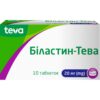
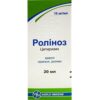


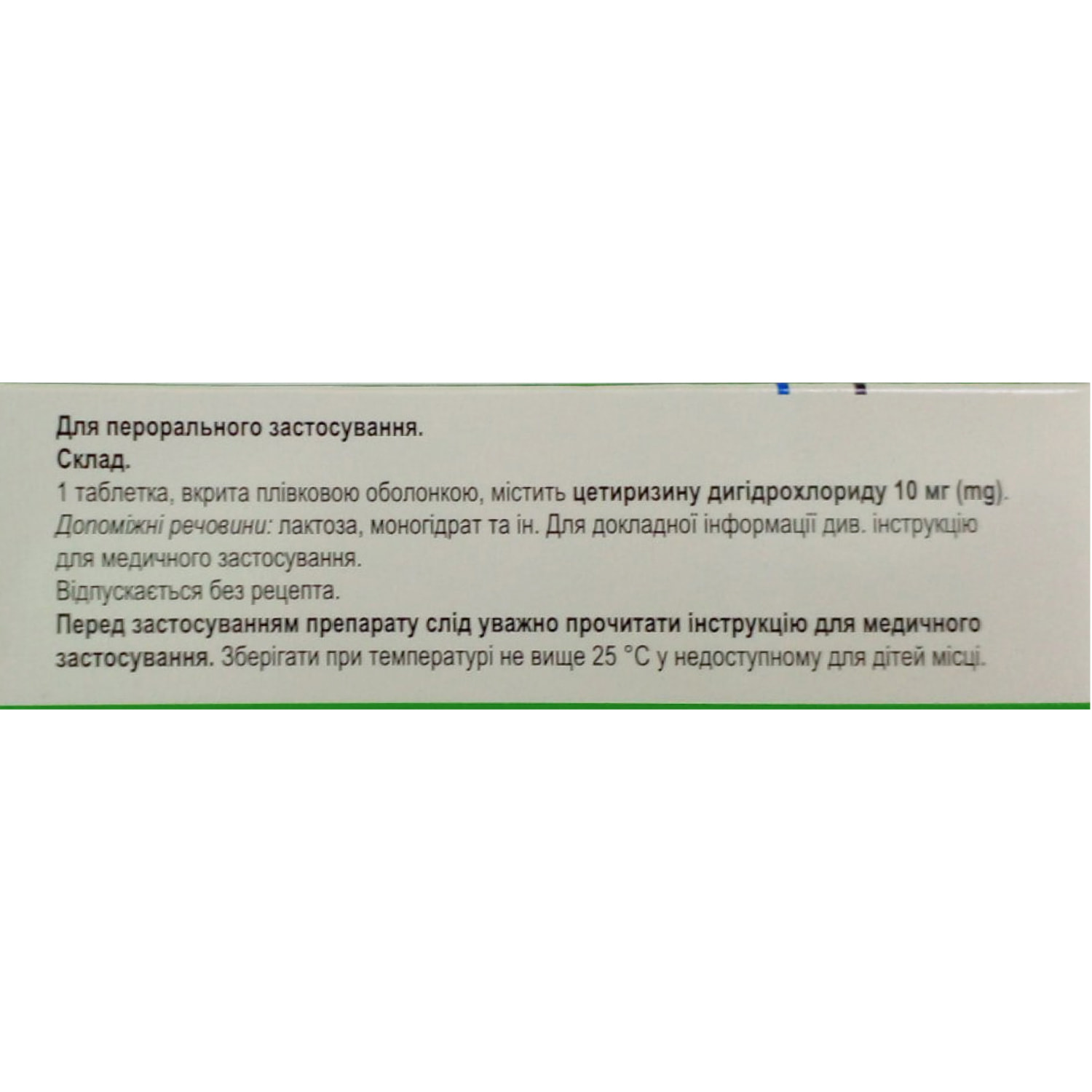
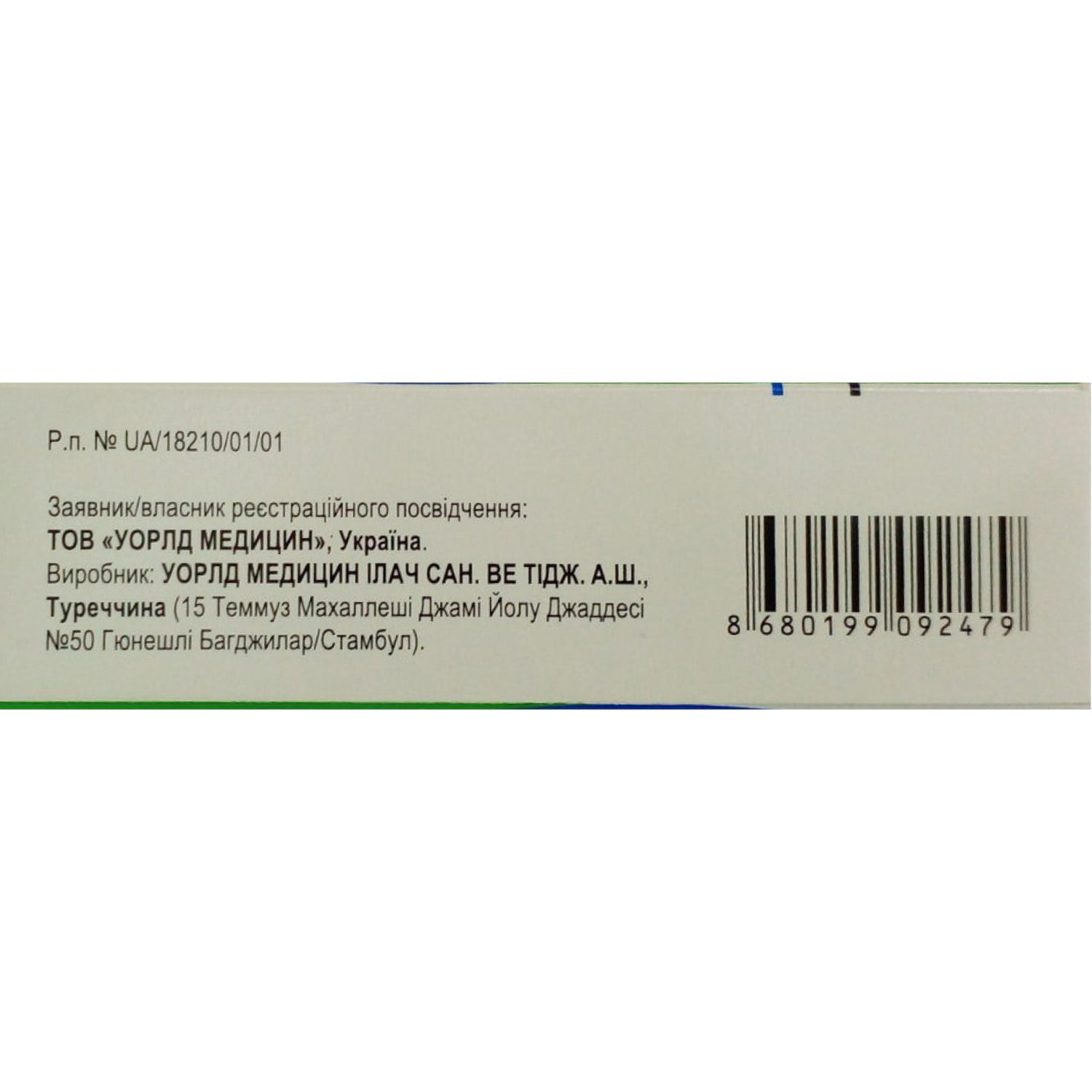

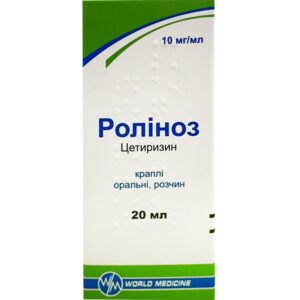

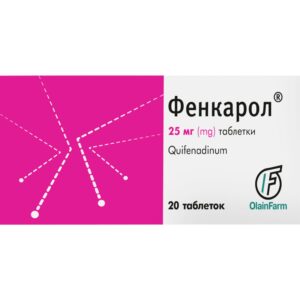
Reviews
There are no reviews yet.